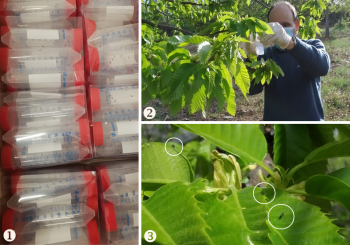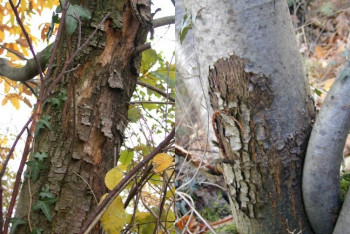Classical biological control of the chestnut gall wasp Dryocosmus kuriphilus in France
Submitted by Haimad Baudrill... on 13 May 2020The objective of the project was to implement in France a classical biological program against the chestnut gall wasp, Dryocosmus kuriphilus (Dk), using releases of the exotic parasitoid Torymus sinensis. The expected outcome of this project were (i) the permanent establishment of the parasitoid and (ii) an efficient and long-term control of the pest.



